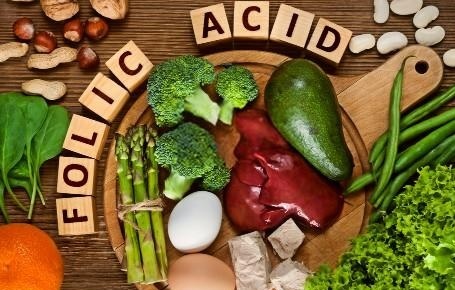In this article, I will tell you the 10 foods that are very rich in folic acid. These are:
- Brewer’s yeast is considered one of the foods very rich in folic acid because 2 tablespoons cover the daily requirements for a pregnant woman or a nursing mother. In addition, you will also benefit from discrete contributions of other B vitamins (1, 2, 3, and 6), calcium (21 mg per tablespoon, 1/3 of the requirements for an adult), significant amounts of iron, magnesium, zinc, copper, phosphorus, and potassium. I like flakes to add to salads and its light aroma is pleasing, even to the little ones. As you can see, brewer’s yeast is one of the foods richest in folic acid.
- Other foods rich in folic acid are cruciferous with over 300 mcg per 100 grams of edible portion. That is, with a small portion (as a garnish) you already have for a day. Cauliflower, red cabbage, endives, and endives fall into this group. Fewer have broccoli, cabbage, or Brussels sprouts that “only” have about 100 mcg. If you want another excuse to eat these delicious vegetables, keep in mind that they also have recognized anticancer properties.
- People should be aware that, they should be consumed in moderation because waste and toxins accumulate in these parts, animal liver (especially beef with 240 mcg per 100 grams) are also foods rich in folic acid.
- Chickpeas lead the ranking of legumes with the highest folic acid content with 180 mcg. Lentils also have amounts to consider (35 mcg).
- In addition, the vegetables that benefit from green leaves are very good. For example, spinach is very rich in iron, vitamin C, and fiber, they also have B9 contributions: 140 mcg per 100 grams. However, people with a tendency to develop stones should moderate their consumption of these products.
- The researchers say that hazelnuts and walnuts have a lot of folic acid in their composition, with 110 mcg per 100 grams of the peeled product. Almonds with 96 or hazelnuts with 72 are not a bad option either. The pistachio has 66.
- Peas and beans, along with other healthy micronutrients, reach almost 80 mcg.
- The richest product in vitamin B9 with 60 mcg, is oats
- The humble bonito is another option, as it exceeds 50 mcg, while the also delicious beet has 90.
- The last recommendation in this article, which is very rich in vitamins are hardened, hard and blue cheeses vary, depending on their composition, between 50 and 70 mcg.
